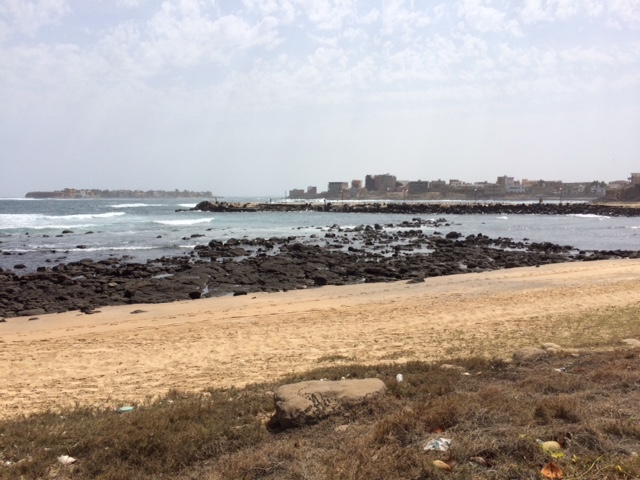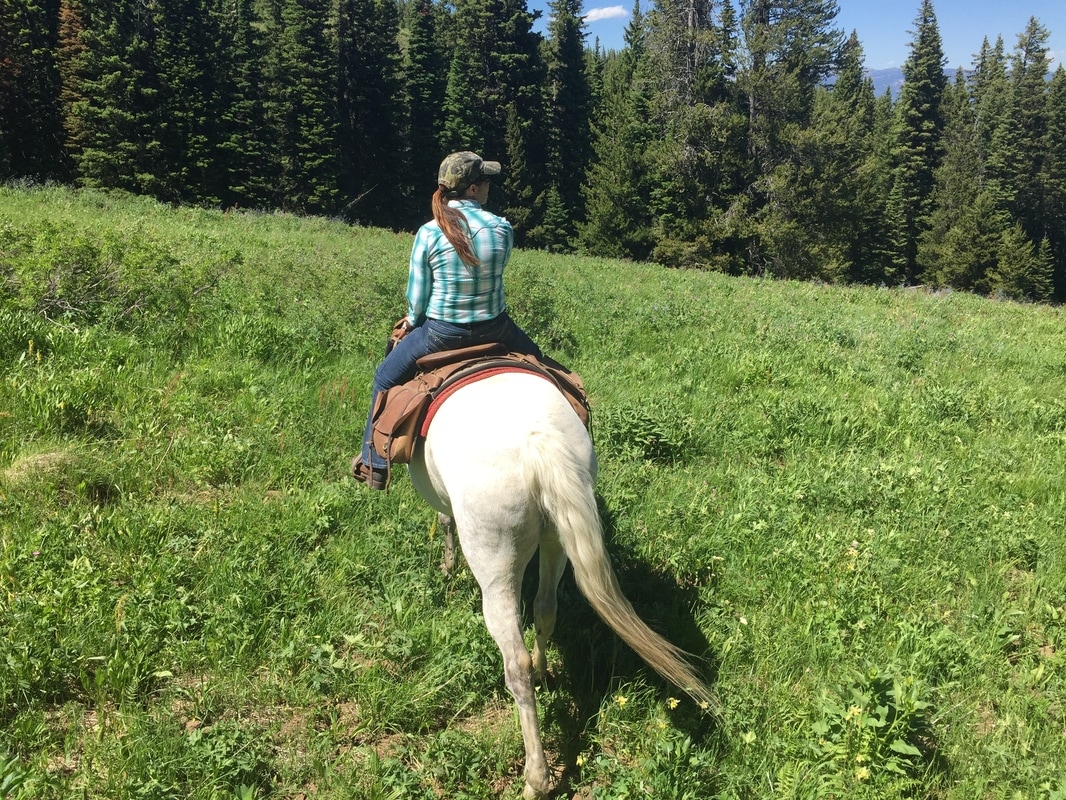|
Imagine the voiceover guy, "Liiiiiiiiiiiiiiiiiiiiive from Dakkar, Senegal - it's the Monarail! After almost 24 hours of travel, I have reached my first destination, the King Fahd Palace Hotel. My world travelers, or those of you that want to be world travelers, I have a recommendation. Purchase the upgrade for your flight - any upgrade that gets you a smidgeon more legroom because while everyone else will walk off the plane wilted, you'll hit the tarmac feeling like a princess. Of course it's hard not to feel amazing when you've just flown across the Sahara Desert at sunset. Attention Honors Biology students, identify and briefly describe one plant or animal that can be found in the Sahara desert, pay particular attention to any special adaptations they might exhibit. Be sure to make sure you are not duplicating someone else's organisms - no repeats! We flew in to Senegal on their Independence Day, so the flight crew welcomed us in traditional dress and sang their national anthem. It was a really special way to begin our adventure in Senegal. In fact, tonight we are meeting with a tailor who will be making us traditional Senegalese clothes from their famous fabrics to wear during our time here. It should help keep us cool in the 105+ degree temperatures we'll be experiencing and also honor the cultural traditions and norms of our hosts. The very first thing I noticed as we walked across the tarmac in Dakar was the smell of the salty ocean air - it reminds me of Maine. And there are palm trees everywhere which is much like Florida. What a wonderful combination of my favorite places in a land so far from both - it is extraordinary. The hotel is located on the Atlantic and I have a lovely view of the ocean from my room. Below you can see the beach and the city, it is currently about 70 degrees and breezy. A wonderful respite from the heat I will be encountering when I travel to Kolda in a few days. Stay tuned!
25 Comments
Julie
4/5/2016 05:50:37 pm
This is such a fantastic opportunity. Thank you for blogging along the way!
Reply
4/6/2016 09:59:58 am
African Peyote Cactus
Reply
Montana
4/6/2016 11:32:18 am
Cypress
Reply
Natalie Hill
4/6/2016 11:37:03 am
The fennec fox is an animal that lives in the Sahara desert. It has many adaptations to help it survive in this environment. For example, it has ears that can be up to 6 inches long. Their ears help them hear prey underground and dissipate body heat. Also, the fennec fox has thick, sand-colored fur, which reflects sunlight to keep it cool. Fur also covers their feet, to protect it from the hot sand and help them run on loose sand. Lastly, its kidney is able to survive on the little water that the fox ingests.
Reply
Avery
4/6/2016 11:39:43 am
The Dromedary Camel used by Desert Nomads, relies on its hump, which can store up to 80 pounds of fat to survive. It can go for days without food or water. Because of their large lips, these animals feed on thorny bushes, and dry grasses. Their long eye lashes are used to protect their eyes from sand, and they also have the ability to close their nostrils to keep the sand out. Big footpads allow them to navigate tough and rocky terrain.
Reply
Kristi Beckett
4/6/2016 11:42:55 am
An animal commonly seen in the Sahara Desert is the sidewinder which is a type of horned viper. This snake has venom that can be lethal and very painful. An adaptation of the sidewinder that helps it traverse the sandy Sahara Desert is its unique sideways movement while slithering. Essentially it slithers sideways in order to gain traction on the sand. Another helpful adaptations are the pale colors of its skin blending into the sand giving it an advantage over its prey. Unfortunately, because of changes in the environment the sidewinder is currently on the endangered species list.
Reply
Kristi
4/6/2016 11:44:23 am
http://www.desertusa.com/reptiles/sidewinder.html
Reply
Katie Alerte
4/6/2016 11:46:19 am
The Addax Antelope is the most adapted of the African antelopes, and their most striking feature is their long, spiral horns. Some of their adaptations include a highly reflective coat, the ability to extract all the water they need from plants, and the ability to tolerate a rise in body temperature by 11°F before resorting to panting. They are the only addaxes that live in the Sahara year-round and have broad hooves that make it easier for them to travel efficiently on sand.
Reply
Katie Alerte
4/6/2016 11:47:02 am
http://www.britannica.com/animal/addax-antelope
Reply
John Atwater
4/6/2016 11:49:07 am
Desert Hedgehog
Reply
Yuenni Ho
4/6/2016 02:08:32 pm
The jerboa lives in the Sahara desert. These adorable little rodents have very long legs and can jump very high. Despite their minuteness, they can run up to 16 miles per hour, making them quite challenging to catch. Amazingly, the jerboa doesn’t have to drink water—quite a useful adaptation for a desert creature. It still needs to take in water of course, like all living things, but it is able to extract enough from its foods to sufficed for its needs.
Reply
Tomas
4/6/2016 03:33:14 pm
Scarab Beetle lives in the Sahara Desert, they are also know as a dung beetle made famous because the roll other animals feces into ball and they burrow inside and eat it from the inside out or they leg their eggs inside giving their offsprings food and shelter
Reply
4/6/2016 04:13:45 pm
Namaqua Dove
Reply
Omar Shareef
4/6/2016 04:46:38 pm
Ostrich
Reply
Omar
4/6/2016 04:47:24 pm
Links:
Reply
Ivor Zimmerman
4/6/2016 08:28:04 pm
There is a type of crocodile called a dwarf crocodile that is believed to live in drainage canals and lakes in the Sahara and Sub-Sahara. It is small, which helps it maintain its bodyweight as it requires less food. It also had adapted a large bone plate on its neck to protect it from predators. Its thick, scaly skin protects it from the sun, and it can drink water that is not clean, which helps when there are droughts.
Reply
Sophia Oriaku
4/7/2016 05:35:22 am
Dorcas Gazelle
Reply
Jane Callaghan
4/7/2016 06:04:07 am
A plant you can find in the Sahara is the Magaria tree. It produces small brown fruit about the size of a cherry, and can be dried and is commonly used for its flour or the purpose of making cakes. The Magaria tree has adapted to life in the Saharan Desert, an important part of the tree's structure are its large and long roots. The function of these roots are for storage of water in the dry climate for extended periods of time. Without these roots the tree would not be able to survive in Saharan climate, water supply is necessary because the rain is not a constant in this environment.
Reply
Chase Marshall
4/7/2016 09:35:22 am
One common adaptive animal that resides in the sahara is the death stalker scorpion. The death stalker scorpion is among one of the most venomous scorpions in the sahara desert and in the world. The venom it produces can lead to respiratory failure and death if not treated quickly. One way the death stalker scorpion has adapted to the harsh climate is through its appearance; the scorpion is able to camouflage itself from predators by changing it's body color to resemble the sandy colored terrain.
Reply
Allie
4/7/2016 10:29:22 am
An animal that can be found in the Sahara desert is the spotted hyena. It looks similar to a dog, and has a spotted coat and short mane. They belong to the family of Hyaenidae. Their weight ranges between 90 to 190 lbs. A description of them includes rounded ears, 2-3 ft tall, and powerful jaw. They live in sub-Saharan Africa. The spotted hyena is mostly nocturnal and are organized into a social structure of clans. This animals is a strong runner with top speeds of 41 miles per hour, and it is an omnivore. They are nicknamed "laughing hyenas" because they laugh, howl, and wail to alert other clan members that they found food. Finally, their main predators are lions.
Reply
Owen
4/7/2016 01:52:11 pm
The monitor lizard is a lizard that has adapted to live in the harsh environment that is the Sahara Desert. The monitor lizard has developed a venom that is as deadly as most venomous snakes. This adaptation is very useful because finding other animal life in the desert is hard and when a monitor lizard gets a chance at a meal it needs to be 100% sure it gets to eat its prey.
Reply
The Olive tree is a species of plants that can be found in the Sahara Desert. Although it is native to the Mediterranean, it can be found in dry climates such as deserts like the Sahara. The olive tree has an extensive root system that grows very long and deep into the ground in search of moisture and nutrients. They are hardy trees having had to struggle and fight for their nutrition.This is helpful in water deprived soil in the Sahara Desert. In addition, the olive tree also has small, leathery leaves to prevent extensive water loss, which is an extremely helpful adaptation in desert environments.
Reply
4/7/2016 09:20:53 pm
The Saw-scaled Viper (Echis carinatus) is an animal that can not only be found in the Sahara desert but also in arid regions and dry savannas north of the Equator across Africa, Arabia, and southwestern Asia. The Echis carinatus is believed to be responsible more deaths than all of the other venomous snakes combined. E. carinatus move in a sidewinding locomotion to gain traction in the sand. This snake is also nocturnal and hunts mammals, birds, other snakes, lizards, amphibians , and invertebrates. Last, this snake's coloration includes various shades of brown, gray, or orange with darker dorsal blotches and lateral spots.
Reply
David
4/7/2016 11:05:30 pm
Red Acacia Tree
Reply
Leave a Reply. |
About this Blog:I am a former Teachers for Global Classrooms Fellow, a program of the U.S. Department of State. I have completed graduate level training in Global Education and traveled to Senegal in April with the program to explore their educational system. This blog is a piece of the global education guide I have created to support other teachers and students in globalizing their classrooms. My focus area is life and environmental science and understanding the interconnectedness of Earth. For more information on the fellowship please visit the IREX website. Archives
March 2017
Categories |





 RSS Feed
RSS Feed